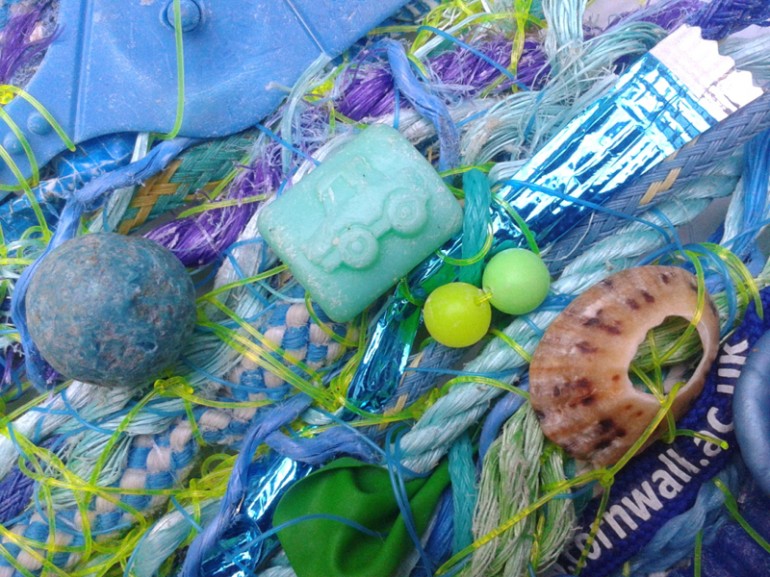Weaving unique tapestries from flotsam – curated by the waves and reinvented
into new narratives
Current exhibition:
Space2 Gallery, Watford Museum, Hertfordshire – 1 May – 28th June, 2014
Scouring the Cornish and Norfolk coastlines for flotsam, Joanna Atherton collects fishing line, netting and other unexpected items for her colourful tapestries. These orphaned objects, curated by the waves, are transformed into exciting, colourful weavings, to be pondered and read anew.
Looking at her flotsam weavings, we can’t help but imagine every object’s untold story – who owned them and how did they arrive on a UK beach?
Jo explains. ‘I have always been drawn to the beach as a convergence zone, oscillating between the states of land and sea with each changing tide. ‘In-between’ travelling spaces are an integral theme in my work. Journeys begin and end here in this liminal space, where the tide delivers extraordinary objects from beyond the horizon.’
The sea, a soup of forgotten fragments, presents the unexpected and ignored; through weaving these items together, Jo provides a second chance for the forgotten fragments to be reinvented and woven into new narratives.
Artist’s Statement:
Scouring the UK coast for flotsam, I collect fishing line, netting and other unexpected objects which are turned into colourful tapestries. In weaving these items together, lost objects are given a second chance, recycled to tell new stories.
The material with which I work often transcends countries and cultures. I choose to weave these fragments together, hinting at the need for shared responsibility when addressing the problem of marine litter.
Much of my work is constructed from netting, rope and fishing line, incorporating small plastic toys washed ashore on the coasts of Britain and Ireland. My tapestries present many playful objects, providing a direct connection to childhood memories long since forgotten.
Cheap production methods have meant that increasingly, we consider small plastic objects to be disposable. Plastic toys from our childhood have found their way into the sea, but despite being jumbled and tumbled by tidal currents, they show few obvious signs of decay, even after decades. While we have grown up, their adventures have continued beneath the waves.
At first a joyful reunion, the toys in my tapestries are familiar, but their stubborn presence then becomes alarming. We soon forget the harmless games of youth as we consider the far from innocent consequences of their continued existence.










